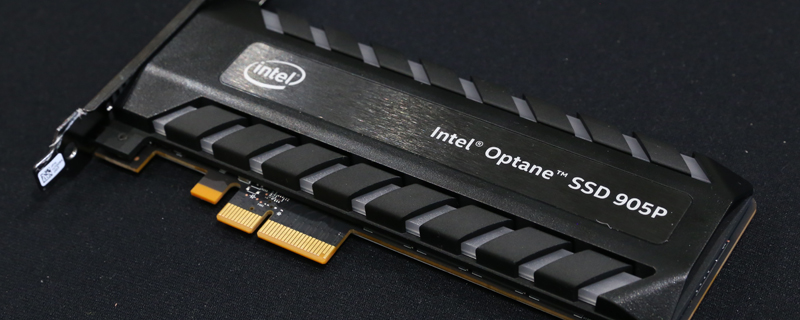Intel Optane SSD 905P 960GB PCI Express and U.2 Review
Conclusion
The Intel Optane 900P was one of the first drives we’ve reviewed that utilised the U.2 connector as opposed to the more common M.2 format, and it had a huge IOPS rating and some pretty decent speed, making it perfect for very specific task requirements. It wasn’t, however, able to dethrone the Samsung 970 range as the fastest drives around.
Today’s review of the Intel Optane 905P finds a very similar technology running under the hood, but this time utilising a PCI Express socket to provide greater compatibility on a number of systems, more pleasant looks, and even better performance. There must be a little something extra going on with the hardware side of things too though, as the U.2 model of the 905P matches up to the PCIe so tightly you could be forgiven for thinking they are the same drive entirely.
Looks are very low down on the list of things one pays attention to with a storage drive, but even allowing for that relative unimportance the 905P is a very attractive drive. It looks like a particularly beefy DIMM converted to PCI Express. The all black PCB, low height, brushed black finish and holes to allow a little lighting to shine all add up to a product which is very easy on the eye. If we were being particularly nit-picky we could argue that having gone to all the trouble of adding LED lighting to the 905P then Intel might as well have gone a small extra step and made it full RGB rather than simply red, green or blue. Especially as the purchasing power of a company such as Intel mean that it would hardly increase the unit cost for them, and for the end user the Optane 905P is already an expensive purchase so an extra tenner or so wouldn’t make much difference. The U.2 model apes the design we saw with the 900P, of a very industrial looking chassis in imposing black with lots of fins to help dissipate any heat generated from the insane speeds of which it is capable.
However, looks are a tiny slice of the storage pie. What really matters are IOPS – the key area in which the Optane technology is ahead of the competition – and raw bandwidth. IOPS unquestionably are the feather in the Optane cap. Both the U.2 900P and this PCIe 905P have read IOPS which utterly decimate the competition and the write results, whilst not quite as far ahead, still top our graph. If you don’t run the 905P in a scenario where it is getting hammered by enormous requests at low queue depths then the raw speed is what matters and here things are a little murkier. Without doubt it is a fast drive, but it doesn’t consistently match up to the Samsung offerings in most of our tests. You get a good idea of how close the U.2 and PCI Express slot connection formats are in bandwidth terms when looking at the two Intel Optane results in a vacuum. Both the 900P and the 905P put out very similar numbers.
The one area where the Intel Optane 905P absolutely smashes all that comes before it is how this speed is utilised. In our three game loading tests the 905P tops the graph pretty comfortably, and in the Windows 10 boot time test we saw it being just as fast at getting back to your desktop whether you were restarting your machine – something which takes around 4 seconds fewer than a cold boot on most drives – or actually booting from cold. These cold boot numbers are a scarcely believable half, HALF, of anything else on the market.
All of which makes the Intel Optane 905P a more desirable option than its 900P brother. Partly because it looks nicer, partly because in PCI Express trim it is something available to all instead of the less common U.2 connector – although most modern motherboards support U.2-Â but mostly because the end results in testing scenarios faced by the average user are consistently better on the 905P whether you plump for the U.2 model or the PCI Express one, so it wins our OC3D Performance Award.
Discuss the Intel Optane SSD 905P 960GB in our OC3D Forums.




